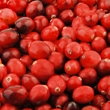
Cranberry remains one of the most commonly used natural medicines for urinary tract infections (UTIs). Help patients understand when it might and might not help.
Overall, the latest data supports previous findings – cranberry might help PREVENT UTIs in some populations, but it doesn’t help TREAT an existing UTI. Specifically, taking cranberry products by mouth might help prevent UTIs in adult females with recurrent UTIs, in children, and in people at risk for developing UTIs after certain surgeries or treatments. It doesn’t seem to offer the same benefits in elderly patients or during pregnancy.
If you’re asked about which cranberry products work best, explain that there still isn’t a clear answer to this. For now, cranberry juice and cranberry extracts seem to be the best bet. Chemicals in cranberry called proanthocyanidins (PACs) keep bacteria like E. coli from sticking to cells that line the urinary tract. PACs from cranberry juice and cranberry extracts seem to be more soluble than PACs from whole cranberry fruit, which might make them more effective against bacteria.
If patients ask why cranberry isn’t a good option for treating an existing UTI, explain that PACs don’t seem to help release bacteria once it’s attached to the urinary tract.
For more details, check out our recently updated monograph.
The information in this brief report is intended for informational purposes only, and is meant to help users better understand health concerns. This information should not be interpreted as specific medical advice. Users should consult with a qualified healthcare provider for specific questions regarding therapies, diagnosis and/or health conditions, prior to making therapeutic decisions. Copyright © 2024 NatMed. Commercial distribution or reproduction prohibited. NatMed is the leading provider of high-quality, evidence-based, clinically-relevant information on natural medicine, dietary supplements, herbs, vitamins, minerals, functional foods, diets, complementary practices, CAM modalities, exercises and medical conditions. Monograph sections include interactions with herbs, drugs, foods and labs, contraindications, depletions, dosing, toxicology, adverse effects, pregnancy and lactation data, synonyms, safety and effectiveness.
